Interview with Physicist jtbell
Meet a Mentor is a weekly series to help you get to know your wonderful Mentors better.
Constructive questions and comments are welcome!
Today we meet: jtbell
Can you give us a brief history of jtbell?
I went to a liberal-arts college in a small town (a village, actually) in the Midwest US. There were only three physics professors, and 3 or 4 physics majors per year, but we covered the core subjects and got to do some research. We pretty much had the run of the department and had keys to the labs, so we spent most of our evenings there doing homework, working on personal projects, and socializing. I enjoyed it a lot.
Besides studying physics and other subjects, I got into computer programming in a big way. This was in the early 1970s, before personal computers existed, so I started with the college’s single Fortran programming course, using punched cards on an IBM 1130, then did some projects on my own. One of them used a graph-spanning algorithm to find the shortest path between two stations on the Dutch railway network. In addition, the physics department picked up an IBM 1620 and a Digital Equipment PDP-5 which I programmed in assembly language using punched paper tape. I spent many evenings “fooling around” with those two machines. All this turned out to have a major effect on the rest of my physics career.
When I started graduate school at the University of Michigan, I thought I might try low-temperature physics. Instead, the bubble-chamber group found out that I was into programming, and invited me to consider doing my Ph.D. with them. I ended up in experimental high-energy particle physics, writing Fortran code for analyzing data on neutrino interactions in the 15-foot bubble chamber at Fermilab. My dissertation was a search in that data for neutrino oscillations. Of course, I didn’t find any.
After I finished my Ph.D. in the early 1980s, instead of continuing with research, I decided to try to recapture my undergraduate days by getting a teaching-oriented position at a college like the one I had gone to. Fortunately, I succeeded, first with a two-year temporary position in upstate New York, and then with a tenure-track position at a small college in the Southeast, where I’ve been ever since.
I was hired here partly on my supposed ability to teach some courses for a computer science minor (in addition to the physics major), even though my only formal academic training in computer science was that single Fortran programming course! For the next 15 years, about 1/3 of my teaching schedule was introductory computer science courses, first in Fortran and Pascal, then in C++. The other 2/3 was physics, of course, including a variety of upper-division courses. Later the college decided to start a computer science major and hired a couple of people with computer science degrees, who took over my CS courses.
When the college first got on the Internet in the early 1990s, I learned enough about Unix system administration to help out with managing what was for several years our only Internet server.
Now, as I approach retirement, I’ve moved over to the administrative staff, doing various computing-related tasks, and teaching an occasional physics course as needed.
How did you become interested in physics?
It might have been the space program. The first astronauts went up when I was a kid. I dabbled in model rocketry for a while. Up through high school, I read a lot of science fiction and popular science books. Of the latter, Isaac Asimov and George Gamow (“One Two Three… Infinity” and “Thirty Years That Shook Physics”) especially impressed me.
When I graduated from high school, I was about equally interested in chemistry and physics. Then I took calculus-based freshman physics (Halliday & Resnick textbook). Maxwell’s Equations blew me away, and I decided to stay with physics.
How was it going from a small liberal-arts college to the big University of Michigan?
In terms of the everyday academic environment, they were actually pretty similar in size, in a way. In grad school, you spend most of your time in one department. The physics department at UM was probably about the same size as the entire faculty of the college that I had come from. When I started doing research, I dealt mainly with my advisor and about three other professors in the bubble chamber group. Classes were a bit bigger, but not huge, 15-20 people instead of 6-8 in my upper-division undergrad physics courses.
Of course, there were a lot more things to do outside of class at UM. Ann Arbor is a great place to spend a few years (actually 8 in my case). I went to classical concerts, both the visiting big names (including Vladimir Horowitz twice) and the university orchestras. I joined the local bicycle club and took long rides in the country with them most weekends. I spent a lot of time in the original Borders bookstore (it didn’t become a chain until after I left Ann Arbor).
What parts of your physics education/training were difficult and how did you overcome them?
Grades in my grad school classes were the worst part. I ended up getting an unacceptable grade in Thermo / Stat Mech (B- or C+, I forgot which) which not only meant I had to repeat that course, it pulled my average down enough that my teaching assistantship was reduced from 1/2 time to 1/4 time. To bring in a bit more money, I taught a math class at a nearby community college, based on an introduction by one of my grad student friends who had already been teaching there on the side. Then I got the invitation to join the bubble chamber group, which gave me a research assistantship. Then I re-took Thermo. The final exam turned out to be “open notes” and my two semesters’ worth of notes enabled me to ace it.
What is it like to be a physics professor?
This is a teaching-oriented undergraduate college. My usual teaching schedule per semester was either three lecture classes (3×1 hour/week each) plus two labs (1×3 hour/week each), or two lectures and three labs. One common combination was 2nd year modern physics (lecture and lab), 3rd year optics (lecture and lab), and a C++ programming course. So most of my time was spent reviewing material, preparing lectures, working out homework solutions, grading homework, writing tests and grading them. And answering questions from students about homework problems, etc.
I also had to serve on at least two committees every year, and did two turns (not back-to-back) as department chair.
For a couple of years early on, I worked a little with a HEP group at a nearby university, and even visited Fermilab a couple of times to help with running their experiment. That fell by the wayside during my first turn as chair.
Being involved with using computers in science early on, how have computers changed over the years in progressing science?
When I got into programming, and while I was in grad school, using computers in science basically meant writing programs in Fortran, targeted at the specific tasks at hand, on multi-user mainframes or “minicomputers.” At U of M the physics department had first a PDP-10, then a VAX 11/780, both from Digital Equipment Corp.
That kind of work still exists, but now there are also personal computers which are much more powerful than the machines named above, with graphics capabilities that were unheard of when I was in grad school. There’s also generic analysis software like Mathematica and Matlab which has basically taken over from custom Fortran programs for most routine standard kinds of analysis.
It’s still very useful for physics students to know how to program, but a lot of the programming they’re likely to do now is in scripting languages built into things like Matlab, or general-purpose scripting languages like Perl that can be used to automate collections of tasks done by other software.
If you could solve one question in physics what would it be and why?
I was into neutrinos and neutrino oscillations in grad school, so I suppose the thing I’d most like to find out is how the neutrino mixing parameters became the way they are.
Do you have a favorite thread at PF?
It’s a tossup between the “Lame Jokes” and “kittens” threads!
What are some of your favorite movies, music and foods?
My wife and I don’t go to movies very often because we’re in a small town and there aren’t any movie theaters close enough for a convenient evening out. So any movies of the last 30 years or so I’ve seen only on TV or DVD / Blu-ray. My tastes tend to run to science fiction (2001, Star Wars), animation (The Incredibles, Monsters, Inc.), some fantasy (Lord of the Rings, Harry Potter), and old comedy and animated shorts (Laurel & Hardy, Looney Tunes). Her tastes are a bit different, which is another reason we don’t go to movies very often!
My main “cultural” interest is classical music. Over the last 40 years of so I’ve accumulated the equivalent of about 6000 CDs, covering most of the mainstream composers from Bach and Vivaldi up into the 21st century, with a strong specialty in Finnish, Scandinavian and Baltic composers. We have have season tickets to the symphony orchestra in a nearby city, for six concerts a year.
Around here, we don’t have very exotic food choices. When I eat lunch out instead of walking home for a sandwich, it’s usually pizza or a Philly cheesesteak, sometimes a Mexican restaurant. When my wife and I go out to local fish restaurant for dinner, I usually get fried oysters. Sometimes we visit a German restaurant in a nearby town.
Thanks for participating jtbell! Next interview will be posted next Monday!
I have a BS in Information Sciences from UW-Milwaukee. I’ve helped manage Physics Forums for over 22 years. I enjoy learning and discussing new scientific developments. STEM communication and policy are big interests as well. Currently a Sr. SEO Specialist at Shopify and writer at importsem.com

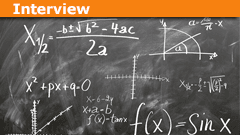
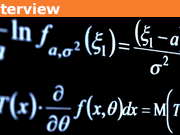
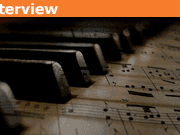
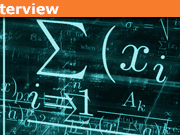

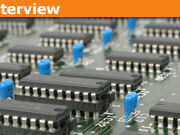

Also, hiking around cities and taking pictures of trains, streetcars etc. is more comfortable in the spring and fall.Don't forget to combine Europe and steam :wink:
http://www.parowozy.com.pl/parada2009.html
You mentioned you're heading into retirement. Any plans for when you get there?We're looking forward to being more flexible with traveling, not just summer. Lots of places are cooler in the spring and fall (Florida, New Orleans, Arizona…) or cheaper (flying to Europe). And we'll be able to go to "major league" concerts and operas during the regular season. I'd especially like to go to a Cleveland Orchestra concert at Severance Hall, which has been renovated/restored and looks much different from when I was there during my college days.
View attachment 160931
Also, hiking around cities and taking pictures of trains, streetcars etc. is more comfortable in the spring and fall.
View attachment 160932
I certainly hope that your have included some PDQ Bach in that collection. :biggrin:View attachment 160933
The U of Michigan Chamber Orchestra and Choir once did a concert that featured PDQ's oratorio "The Seasonings" ("Bide thy thyme", "To curry favor, favor curry"). I think it was on April Fool's Day. :tongue2:
Playing music on radio reminded me of a small program a colleague of mine wrote back in early nineties – it played some simple music moving reading head in 5.25" FDD with different speeds.Some flatbed scanners have "easter eggs" that play tunes on the stepper motors – e.g. http://www.eeggs.com/items/557.html
Playing music on radio reminded me of a small program a colleague of mine wrote back in early nineties – it played some simple music moving reading head in 5.25" FDD with different speeds.
Over the last 40 years of so I've accumulated the equivalent of about 6000 CDs, covering most of the mainstream composers from Bach and Vivaldi up into the 21st century, with a strong specialty in Finnish, Scandinavian and Baltic composers.I certainly hope that your have included some PDQ Bach in that collection. :biggrin:
Hi jt,
I also worked on some old computers. You could play songs on a nearby AM radio by coding certain "do" loop instruction sets one after another to form the progression of notes. The number of iterations in a loop controlled the length of each note. I remember that somebody played "Help Me Rhonda."
You mentioned you're heading into retirement. Any plans for when you get there?
Kitten thread!!!!
Great profile jt!
Thank you for your contributions on the site, jtbell!
That IBM 1620 was definitely interesting. Instead of fixed-length words of binary digits (bits), it had arbitrary-length words of decimal digits! Each decimal digit was represented internally by six bits: four for the digit itself, a "check bit" and a "flag bit." Among other things, the flag bit was used to mark the highest digit in a number. The length of a number was limited only by how much memory you had available, and now careful you were about allocating it.
I wrote a program that calculated factorials (n!), exactly, up to a bit over n=3000. I still have a copy of the console printout of the result somewhere. I think it took something like six or seven hours to calculate. The status lights on the console flashed in a distinctive pattern each time around the main calculation loop, and I could watch the loop cycles get longer and longer as the numbers being multiplied got longer and longer.
View attachment 160915
To top it off, it emitted enough RF to be audible on a portable radio tuned to a suitable frequency, and I could also hear the progressively lengthening cycles: oooo-OO-ooooo-OO-oooooo-OO-ooooooo-OO-….
Thanks for sharing JT.
Remembering the days of core memory
View attachment 160913
Computer History Museum – IBM 1620
Thanks, JT.